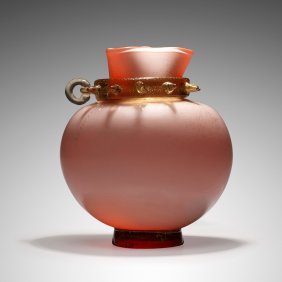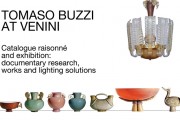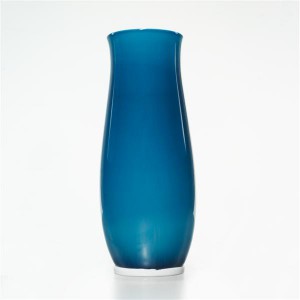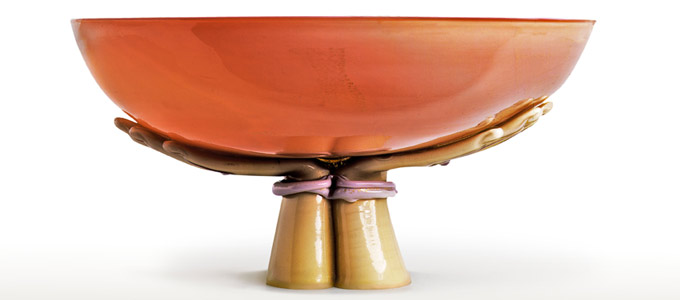
The first event organised by the Institute of Art History (Giorgio Cini Foundation) in 2014 – the 60th anniversary year of its foundation – is an international conference to commemorate the great 20th-century architect and designer Tomaso Buzzi.The Institute of Art History will stage the conference through its own Centre for the Study of Glass ahead of an exhibition on the architect currently being organised by the Stanze del Vetro (Rooms for Glass) for next September on the Island of San Giorgio. During the conference various aspects of Buzzi’s work as an artist at the Venini Glassworks in the 1930s will be explored and set in their historical context. The conference will thus prepare the academic and research ground for the autumn exhibition entitled Tomaso Buzzi at Venini, curated by Marino Barovier (13 September 2014 – 11 January 2015), which will focus on Buzzi’s works in the years when he collaborated with the Murano glassworks (1932-1933).

The scholars and experts invited to the conference on San Giorgio Maggiore will explore and discuss the complex multifaceted figure of Buzzi. A friend and collaborator of Gio Ponti, Buzzi became one of the most important creators of Italian taste in the 1930s and ’40s and set the benchmark for many artists in the following years. He was not only an architect and industrial and interior designer but also collaborated with the magazine Domus, and worked for some prominent members of the Italian aristocracy: Volpi, Cini and Visconti, to mention but a few. Buzzi was involved in projects for important buildings such as the Villa Necchi Campiglio in Milan, recently restored by the FAI, and Palladio’s Villa Maser at Treviso. In Venice he worked on renovations for the Palazzo Papadopoli, the Palazzo Labia and the Palazzo Cini at San Vio, where he made two small but significant contributions from 1956 to 1958: the creation of the charming Rococo-style oval room and the addition of a spiral staircase.
 Chaired by Valerio Terraroli (University of Verona), the morning session will start with Marco Solari, the artist’s great-nephew, who will give an oneiric presentation, blending the music and colours that, in 1956, led Tomaso Buzzi to acquire La Scarzuola, a 13th-century monastery with annexed church at Montegabbione (Terni), which he wished to redesign as a kind of ideal city; Lucia Borromeo (FAI – Fondo Ambiente Italiano) will describe Buzzi’s work on the Villa Necchi Campiglio, Milan, in 1938, two years after the villa had been designed by Piero Portaluppi; Roberto Dulio and Cecilia Rostagni (Politecnico di Milano) will illustrate the taste of Buzzi and Ponti in the celebrated magazine Domus. Elena Pontiggia (Accademia di Brera, Milan) will survey major 1930s exhibitions in Milan featuring Buzzi; Alberto Anselmi (IUAV, Venice) will focus on Buzzi in Rome; and Elena Portinari (Ca’ Foscari, Venice), will end the morning session with a talk on Buzzi and Venice.
Chaired by Valerio Terraroli (University of Verona), the morning session will start with Marco Solari, the artist’s great-nephew, who will give an oneiric presentation, blending the music and colours that, in 1956, led Tomaso Buzzi to acquire La Scarzuola, a 13th-century monastery with annexed church at Montegabbione (Terni), which he wished to redesign as a kind of ideal city; Lucia Borromeo (FAI – Fondo Ambiente Italiano) will describe Buzzi’s work on the Villa Necchi Campiglio, Milan, in 1938, two years after the villa had been designed by Piero Portaluppi; Roberto Dulio and Cecilia Rostagni (Politecnico di Milano) will illustrate the taste of Buzzi and Ponti in the celebrated magazine Domus. Elena Pontiggia (Accademia di Brera, Milan) will survey major 1930s exhibitions in Milan featuring Buzzi; Alberto Anselmi (IUAV, Venice) will focus on Buzzi in Rome; and Elena Portinari (Ca’ Foscari, Venice), will end the morning session with a talk on Buzzi and Venice.

The afternoon session – with Lucia Borromeo in the chair – will begin with another joint presentation: Irene de Guttry and Maria Paola Maino (Archivi Arte Applicate, Rome) will illustrate Tomaso Buzzi’s activities as an interior designer and in the world of ceramics. Silvia Chiesa (a lecturer in art history) will bring to the debate some new elements that have emerged from the architect’s invaluable archives, while Giovanna D’Amia (Politecnico di Milano) will explore Buzzi’s relation with the Valtellina area (he was born in Sondrio on 30 September 1900). Paola Tognon (IULM, Milano) will investigate Buzzi’s Ideario, with all its antique and modern glass, stone, ceramics and wood; Alberto Giorgio Cassani (Accademia di Belle Arti, Venice), author of a successful monograph on Buzzi, will look into the architect’s career in theatre. The day will end with a paper by Valerio Terraroli on the complex relationship between Buzzi and Ponti, initially friendly and prolific but eventually ending in an irreparable rift.







